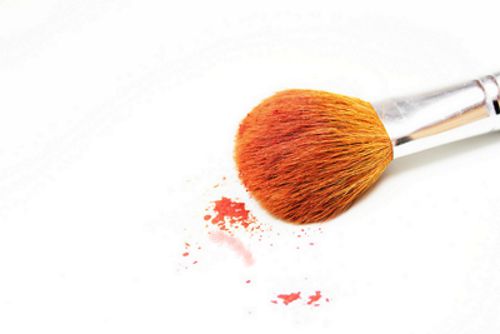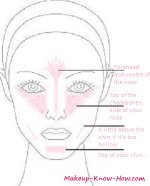How To Assess Hypoallergenic Makeup

Hypoallergenic makeup is supposed to be the safe bet for people with sensitive skin. You’ll find the label on a lot of cosmetic products.
First though, find out what it really means, and know which ingredients to avoid in various types of makeup if you want to avoid irritation...
What Does 'Hypoallergenic' Really Mean?
The term “hypoallergenic’, is just like “organic” or “natural”.
Any product can slap it on it’s label because it’s not regulated...
Now- it's close to impossible to create a product that is guaranteed not to cause an allergic reaction.
Too many people are allergic to too many different things.
However, companies convey their efforts(real or made-up...) to keep the product free from common irritating ingredients by labeling it hypoallergenic.
These efforts may be real and result in a great product, or they may just print the label for fun- erm, without making any effort...
So degrees of 'hypoallergenicness' can all result in the same label, on two completely different versions of a foundation...
Bottom Line: It means nothing.
You can read more about the regulation of the term on the FDA stance on hypoallergenic makeup labeling.
To really lessen your chances of irritation, rather go beyond the label.
Different Causes For Skin Reactions
- You really do have sensitive skin that is easily irritated
- Your products may be over their 'use by' date
- You are allergic to one of the products
- The product has one or more irritating ingredients ...
When you’re trying to find the source of skin irritation, you should also take a look at the tools you’re using.
Are they really clean? Or are you using natural brushes that are irritating your skin? Rule this out by applying your makeup with clean fingers first.
To really know if what you need is hypoallergenic makeup, rule out makeup that has gone bad first.
Then for extremely sensitive skin and allergies, consult a dermatologist if you cannot get rid of the irritation by avoiding products on this list of ingredients. This way, you can patch test a whole lot of allergens at once...
Especially seeing as this list is far from complete or conclusive...
Look Into Your Ingredient List For Guidance
There are a few ingredients present in most makeup formulations that are know to irritate sensitive skin.
So even if you can’t say the names, you can carry the list around on your phone and see if something that slightly resembles it is on your label! Just take a mental picture and compare… letter by letter… That’s it...
The most common irritants come in the form of fragrance, alcohol, preservatives, and dyes.
So you want your hypoallergenic makeup to be fragrance free, alcohol free, either preservative free(which means they're in powder form) or void of common irritant preservatives, and with non irritant dyes.
There are a whole host of ingredients that can also be added to your products, that are beyond the scope of this article.
Fragrance Free Makeup
Firstly, sometimes products are labelled "fragrance free" or "unscented".
This might just mean that they have no smell.
How do they have no smell?
They may have had a fragrance added that masks the odor coming from other ingredients.
So read the fragrance claims very carefully...
These are the most common fragrances to look out for...
|
|
Eliminate The Bad Alcohols...
Alcohol can make products a little thinner and help them penetrate the skin. There are good and bad alcohols. The latter being our good ol' alcohol friend, that's always causing problems no matter how it enters your life:)!
Most hypoallergenic makeup won't have bad alcohol, but some will. It's your responsibility to be on the lookout! Here's a list of the names for this alcohol problem child...
|
|
Irritant Preservatives
Preservatives are a necessary nuisance in most makeup because they keep it from spoiling. They're like condoms for bacterial reproduction:). So just like latex, they might cause irrititation or an allergic reaction to sensitive skin... Here are the worst offenders...
|
|
To avoid preservatives completely, you can stick to powder formulations. Otherwise, there are many other preservatives that may not irritate you in liquid and cream formulations. Just make sure that the above are not in there to lessen the chances for a flare up...
Exfoliators and AntiOxidants In Hypoallergenic Makeup
Exfoliation can irritate skin because it encourages the sloughing off of dead skin. Too much exfoliation can also be a form irritation. Your skin cells may just be crying out for a break.
Antioxidants are meant to interact with your skin in a way that catches unstable molecules and making them stable. So this could also irritate skin that is sensitive.
These well meaning irritants are:
- Salicylic acid
- Retinol
- Retinyl acetate(retin A)
- Witch hazel
- Retinyl Palmitate
Artificial Dyes
There aren't that many dyes that are known to be common irritants. Here FD&C Yellow No. 5(tartrazine)
The list is not exhaustive, because skin conditions are so different. So the best way to test products for irritation, is really just to go to the store, and try them on… do a patch test, and see how your skin reacts after a few(ideally 24 to 48) hours.
If you want to buy now, and are shopping, start at the cosmetic isle. Apply what you want, then at the end of your spree, come back around to the mirror...

